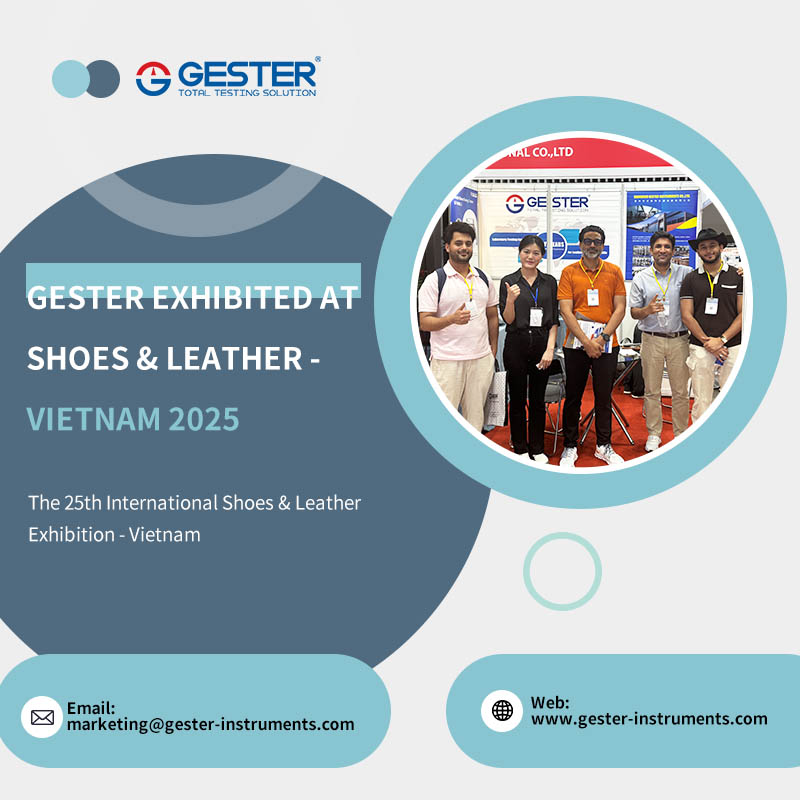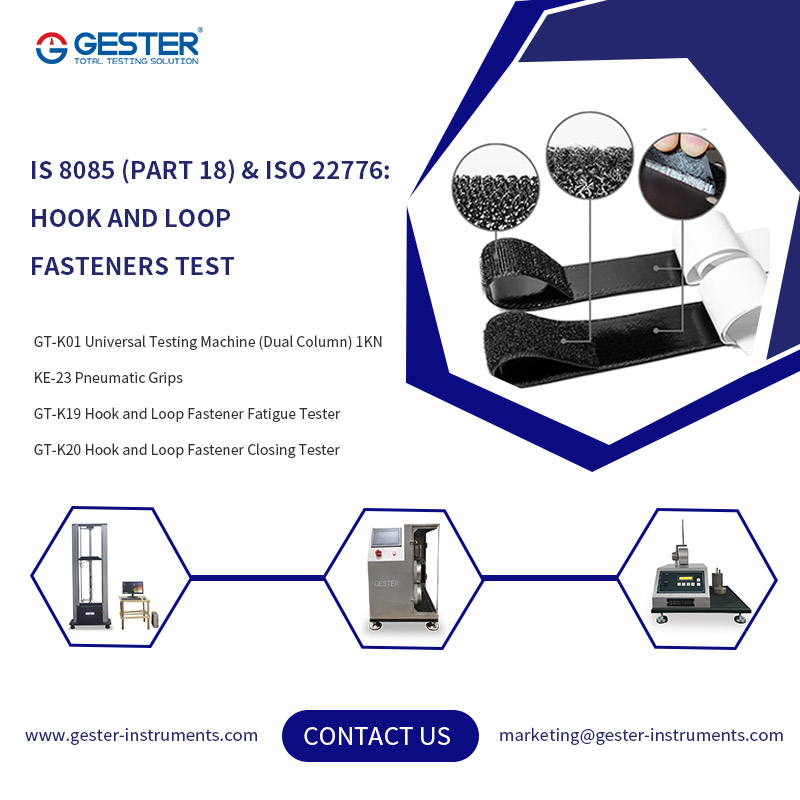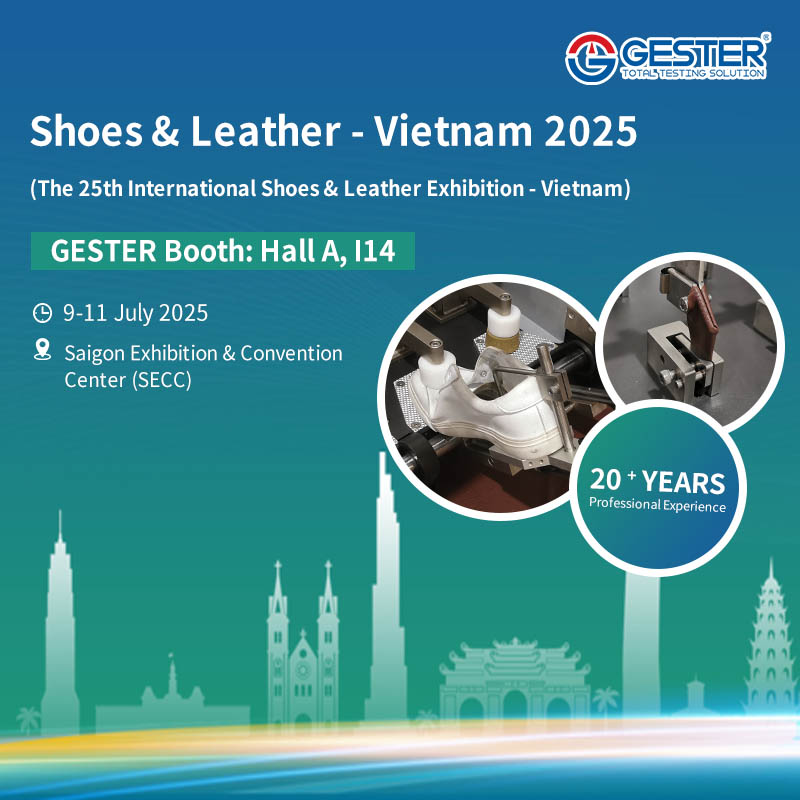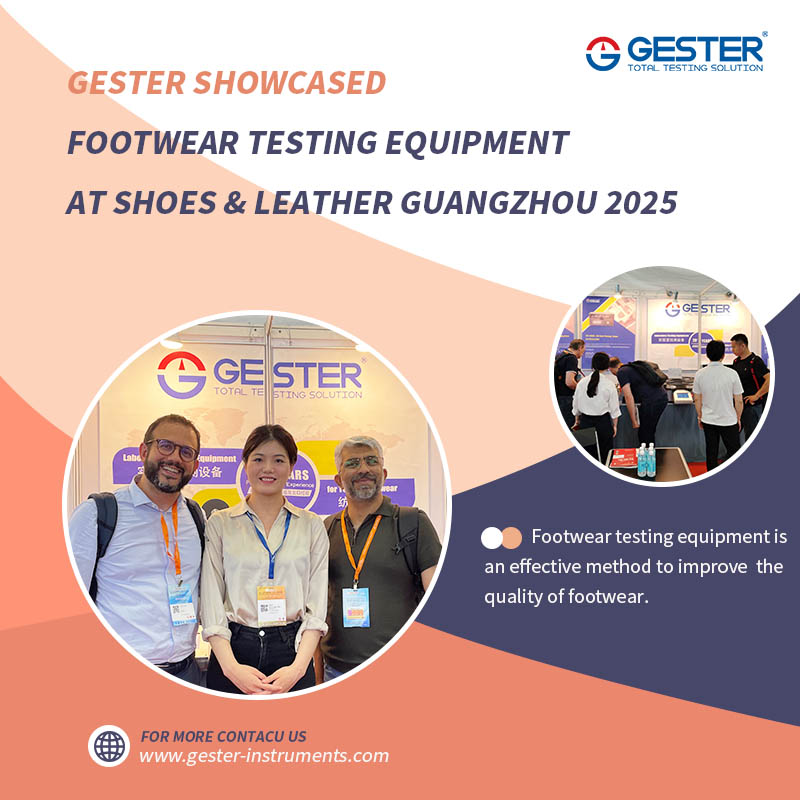IS 8085 (Part 18) & ISO 22776: Hook and Loop Fasteners Test
June 11, 2025
IS 8085 (Part 18) & ISO 22776: Hook and Loop Fasteners Test We use a variety of fasteners throughout our lives, and one of the most notable is the ‘hook and loop’ fastener, also known as Velcro. This simple yet powerful design is used in clothing, footwear and consumer products, but have you ever wondered how strong these Velcro fasteners really are? What kind of force can they withstand to keep items safe and secure? Peel Strength and Shear Strength are two important indicators of the performance of hook and loop fasteners. In this article, we will introduce these two test methods and related standards as well as the applicable equipment in detail. 1. Peel Strength Test 1.1 Definition of Peel Strength Peel strength refers to the anti-peeling ability of hook and loop fasteners in the vertical separation direction, usually expressed in N/mm (Newton/mm). This index reflects the adhesion performance of fasteners under repeated opening and closing or force. 1.2 The peel strength tests described herein are based on the standards IS 8085 (Part 18) / ISO 22777. specifies a test method for determining the peel strength of touch and close fasteners before and after repeated use. Test Method: After bonding the hook side and the hair side, fix it on the tensile machine, peel it off at a constant speed and record the peeling force curve. 2. Shear Strength Test 2.1 Definition of Shear Strength Shear strength refers to the shear resistance of hook and loop fasteners in the direction of parallel force, usually expressed in kPa (kPa). This index reflects the stability of the fastener in the lateral force, such as backpack straps, safety belts and other application scenarios. 2.2 The peel strength tests described herein are based on the standards ISO 22776. ISO 22776 specifies the test methods for the shear strength of hook and loop fasteners. Test method: After bonding the hook surface and the hair surface, apply shear force until separation, and record the maximum shear force. 3. Applicable equipment 3.1 GT-K01 Universal Testing Machine (Dual Column) 1KN KE-23 Pneumatic Grips Application This tester is designed for conducting tensile, compression, bending, shearing, bonding strength, peeling, tearing and other tests for shoes, rubber, plastic, leather, metal, nylon and other materials. This tester is designed for conducting tensile compression, bending, shearing, bonding strength, peeling, tearing and other tests for shoes, rubber, plastic, leather, metal, nylon line, fabric, paper, aviation, packaging, construction, petrifaction, electrician, vehicle and other materials. It is a basic equipment of quality control, receiving inspection, physical test, mechanics research, material development. 3.2 Hook and Loop Fastener Fatigue Tester GT-K19 It is a basic equipment of quality control, receiving inspection, physical test, mechanics research, material development. It is applicable for repeatedly open and close motion for touch and close fasteners. Principle In...
View More







